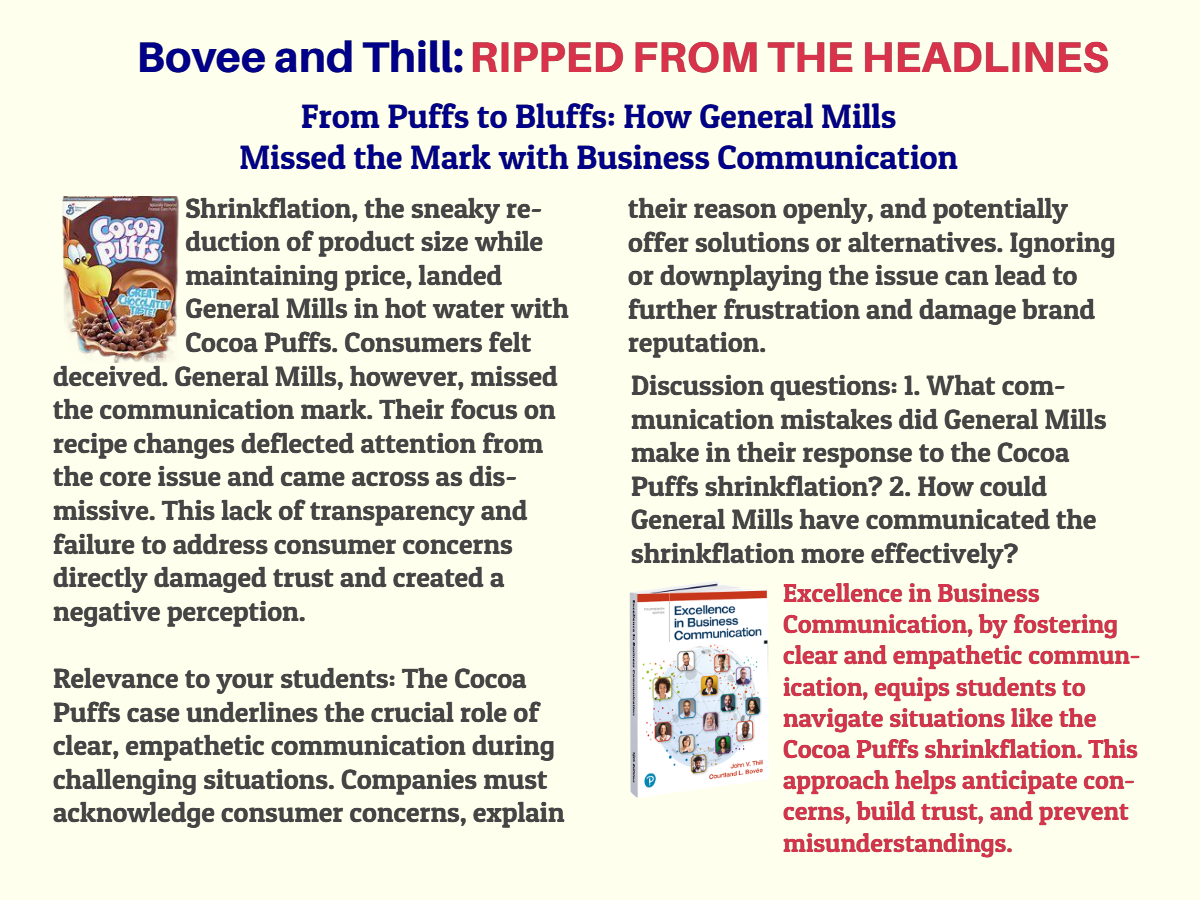
Discussion Questions: and Answers
1. What communication mistakes did General Mills make in their response to the Cocoa Puffs shrinkflation?
Lack of transparency: General Mills failed to directly acknowledge the size reduction, focusing instead on highlighting recipe changes. This created an impression of being evasive and dismissive of consumer concerns.
Ignoring consumer sentiment: General Mills did not address the outrage and frustration expressed by consumers, leaving them feeling unheard and unimportant.
Missed opportunity to build trust: By not openly addressing the issue and offering explanations or solutions, General Mills missed a chance to rebuild trust and maintain a positive brand image.
2. How could General Mills have communicated the shrinkflation more effectively?
Transparency: Acknowledge the size reduction upfront and explain the reasoning behind the decision. This demonstrates honesty and respect for consumers.
Empathy: Acknowledge the impact on consumers and express understanding of their concerns. This shows empathy and builds trust.
Offer solutions: If possible, provide alternative options or explanations to mitigate the negative perception. This demonstrates a willingness to address concerns and find solutions.
Open communication: Encourage open dialogue with consumers, answer questions honestly, and address their concerns in a timely manner. This fosters trust and transparency.
 Excellence in Business Communication provides students with a comprehensive toolkit to handle situations like General Mills' Cocoa Puffs controversy effectively. The book emphasizes the importance of clear, transparent, and empathetic communication, particularly during challenging situations. Students learn to acknowledge and address stakeholder concerns directly, rather than deflecting or downplaying the issue. They understand the value of open, honest dialogue in maintaining trust and positive relationships.
Excellence in Business Communication provides students with a comprehensive toolkit to handle situations like General Mills' Cocoa Puffs controversy effectively. The book emphasizes the importance of clear, transparent, and empathetic communication, particularly during challenging situations. Students learn to acknowledge and address stakeholder concerns directly, rather than deflecting or downplaying the issue. They understand the value of open, honest dialogue in maintaining trust and positive relationships.
The text delves into strategies for crafting messages that convey authenticity, transparency, and a genuine commitment to addressing consumer needs. Students discover how to navigate complex business challenges by actively listening to stakeholder feedback, responding promptly and professionally, and finding solutions that align with both company goals and consumer expectations.
Moreover, Excellence in Business Communication highlights the potential consequences of poor communication, such as damaged reputation, loss of consumer confidence, and erosion of brand loyalty. By examining real-world case studies and best practices, students gain valuable insights into effective crisis management and proactive communication strategies.
Armed with the knowledge and skills gained from this book, students can approach business challenges with confidence, ensuring that their communication efforts foster understanding, preserve trust, and contribute to long-term organizational success. Excellence in Business Communication not only prepares students to handle immediate crises but also lays the foundation for building strong, positive relationships with all stakeholders in their future careers.